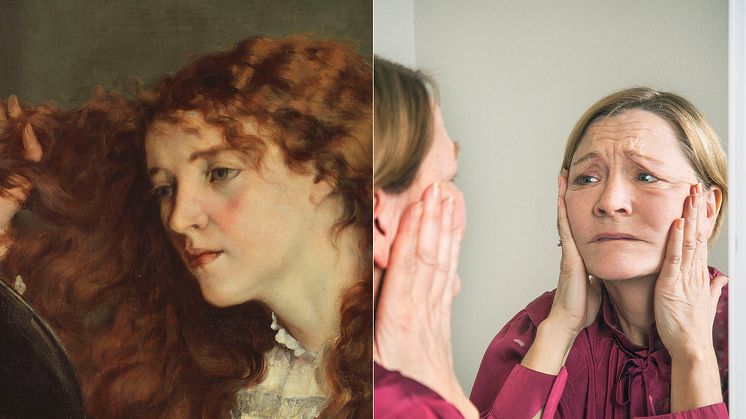
Press release -
Selfies now and then in Nationalmuseum’s highlights exhibition
In a project about self image and identity, Nationalmuseum has been studying the popular social media phenomena selfies, by comparing them with portraits in the museum’s collections. The result is on show in the exhibition Highlights until 31 August.
Margareta Gynning is a gender researcher and senior curator at Nationalmuseum. As a specialist on portraits she has been studying selfies in relation to the Western portrait tradition. She has been comparing poses, body language and stereotypes which reveals that the selfie is not an entirely new genre of visual art, as is sometimes claimed today, but one firmly rooted in the older Western tradition of portraits. What seems like an egocentric facet of contemporary life is first and foremost an expression of our need for mutual recognition.
– It is about how we want to be seen, a painted portrait is mainly about power, marketing, and positioning yourself in the social hierarchy. It is the same thing with a selfie that you post on Facebook or Instagram, says Margareta Gynning, gender researcher and senior curator at Nationalmuseum.
Rembrandt is one of the 17th century painters that surely would have been using Instagram if he lived today. He was a master at marketing his studio and building his own brand, and painted more than 50 self-portraits where he investigated the role of the artist and tried different stereotypes. One of his earliest portraits is from 1630 which belongs to the Nationalmuseum, and in which he paints, like other self-portraitists, by looking at himself in a mirror. It is a process marked by slowness, depth and introspection. The selfie on the other hand seeks to give the impression of being the work of a moment, improvised and laid-back. And yet, both as pictorial construction and in relation to body language, fashion and social conventions, it recalls the practiced pose we adopt when we view ourselves in a bathroom mirror. A study of young people’s media behavior made by the Swedish Media Council, shows that girls as young as ten market themselves using selfies with well-rehearsed so called duck face poses, while boys have unmoved stone face poses as their ideal.
In the newly opened highlights exhibition, you can find the result of this portrait project in a section which is called Selfies – Now and Then, where older portraits made by famous artists like Rembrandt and Alexander Roslin hang next to examples of modern-day selfies. On show in the exhibition is also an audiovisual presentation with the actress Ann Petrén where she explores the most usual stereotypes and poses in portraits, both now and then. The focus is on the body and stereotypes, how we are exposed to changing gender norms through our body language. The exhibition is on show at Nationalmuseum’s venue at the Royal Swedish Academy of Fine Arts until 31 August. You can read more at: www.nationalmuseum.se/selfieseng.
Further information for media
Margareta Gynning, gender researcher and senior curator, margareta.gynning@nationalmuseum.se, +46 8 5195 4399
Hanna Tottmar, press officer, hanna.tottmar@nationalmuseum.se, +46 767 23 46 32
Caption
Gustave Courbet, Jo, the Beautiful Irish Girl; Ann Petrén
from Sefies – Now and Then. Photo:
Anna Danielsson/Nationalmuseum.
Categories
Nationalmuseum is Sweden’s premier museum of art and design. The collections comprise older paintings, sculpture, drawings and graphic art, and applied art and design up to the present day. The museum building is currently under renovation and scheduled to open again in 2017. In the meantime, the museum will continue its activities through collaborations, touring exhibitions and a temporary venue at the Royal Swedish Academy of Fine Arts, Fredsgatan 12, Stockholm. Nationalmuseum collaborates with Svenska Dagbladet, Fältman & Malmén and Grand Hôtel Stockholm. For more information visit www.nationalmuseum.se.

